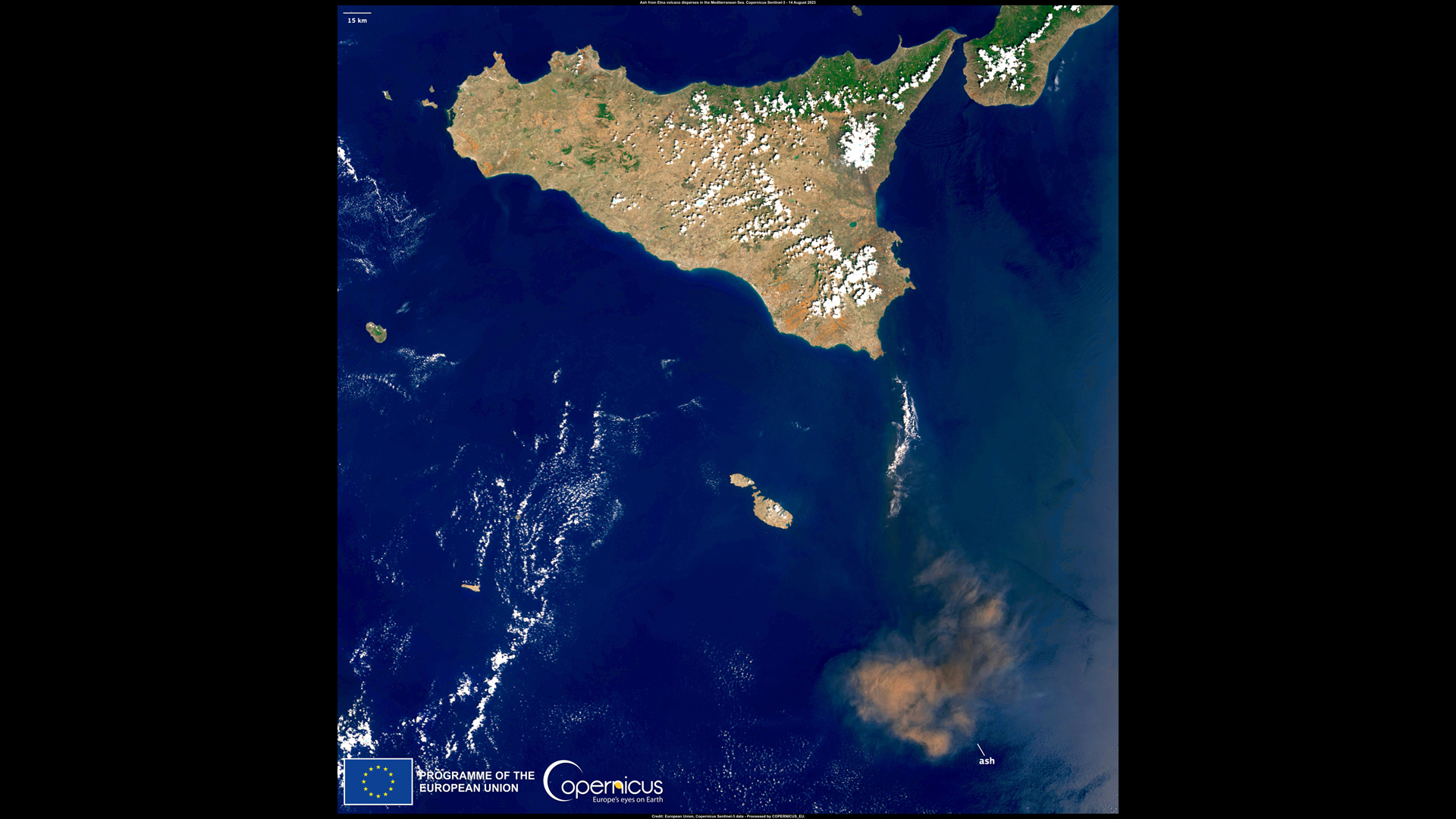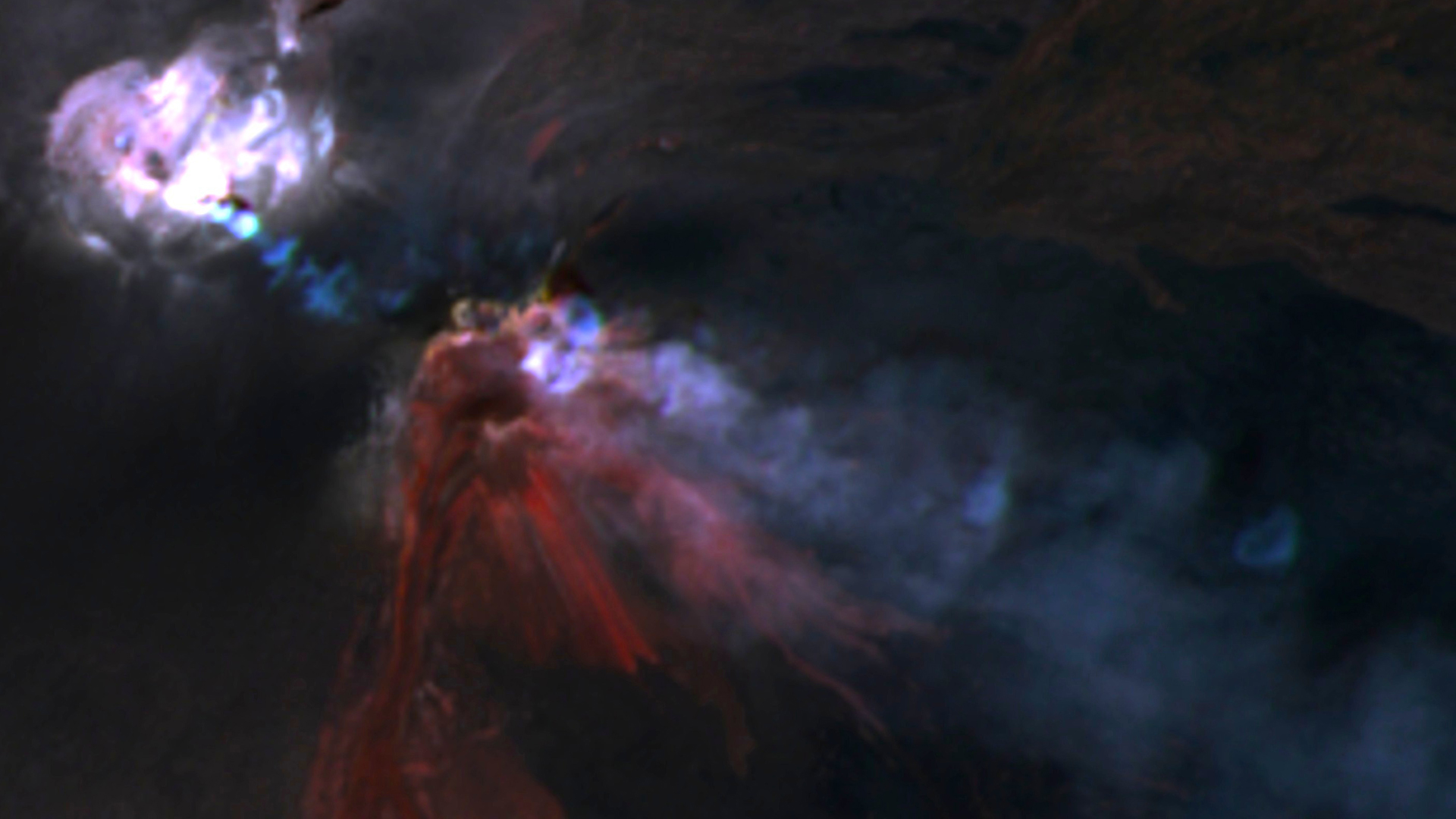Satellites show Mount Etna volcano erupt after weeks of puffing out smoke rings (photos)
Italy's most active volcano has been providing curious entertainment to volcanologists this summer.

Europe's most active volcano, Italy's Mount Etna, erupted on Sunday (Aug. 13) after weeks of puffing out odd smoke rings. Here is how it looked from space.
Europe's weather satellite MTGI-1 captured a thick plume of smoke rising from the crater of the 11,000-foot-high (3,357 meters) volcano located on the Mediterranean island of Sicily early on Monday (Aug. 14) morning.
The image, taken from MTGI-1's perch in geostationary orbit 22,000 miles (36,000 kilometers) above Earth, shows the dark, sulfur-rich plume spreading southward from Sicily across the Mediterranean Sea toward the coast of Libya.
Related: Mount Etna's fiery eruptions seen from space (satellite photos)
The eruption, which also produced spectacular geysers of lava, posed no risk to residents of Sicily, but forced local authorities to close a local airport due to high concentrations of abrasive volcanic ash in the air. Volcanic ash, which contains particles of molten rock, could damage aircraft engines and is considered a major risk for aviation.

The eruption came after weeks of mild activity, during which the volcano regularly spewed large rings of smoke. Volcanologists think that this rare phenomenon occurs when a bubble of gas bursts through the volcanic vent, the opening at the top of a volcano through which magma and gases reach the surface. Numerous volcano experts and random observers posted images of those rings on X, formerly known as Twitter, over the past weeks.

The rings were so large that they were distinguishable even in images taken by satellites from space. An Earth-observation researcher known only under his X moniker Kosmi, found those rings in snapshots taken by Europe's Earth-observation satellite Sentinel-2.
Breaking space news, the latest updates on rocket launches, skywatching events and more!
Italy's Civil Protection Department triggered a yellow, moderate, warning for Etna's activity. Despite being known for its frequent outbursts, the volcano isn't usually dangerous according to the Department, as its lava rivers flow slowly and require a lot of time to reach surrounding settlements. The volcanic ash, however, could cause a lengthy disruption to air travel and substantially worsen air quality in the Mediterranean region.

Tereza is a London-based science and technology journalist, aspiring fiction writer and amateur gymnast. She worked as a reporter at the Engineering and Technology magazine, freelanced for a range of publications including Live Science, Space.com, Professional Engineering, Via Satellite and Space News and served as a maternity cover science editor at the European Space Agency.
